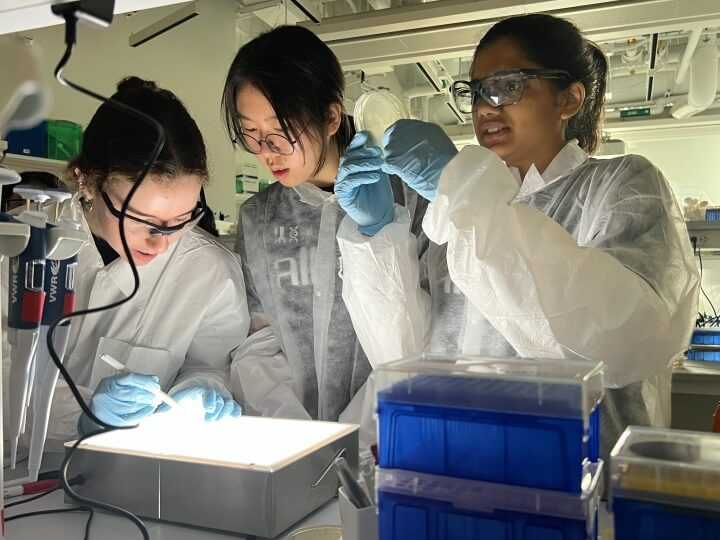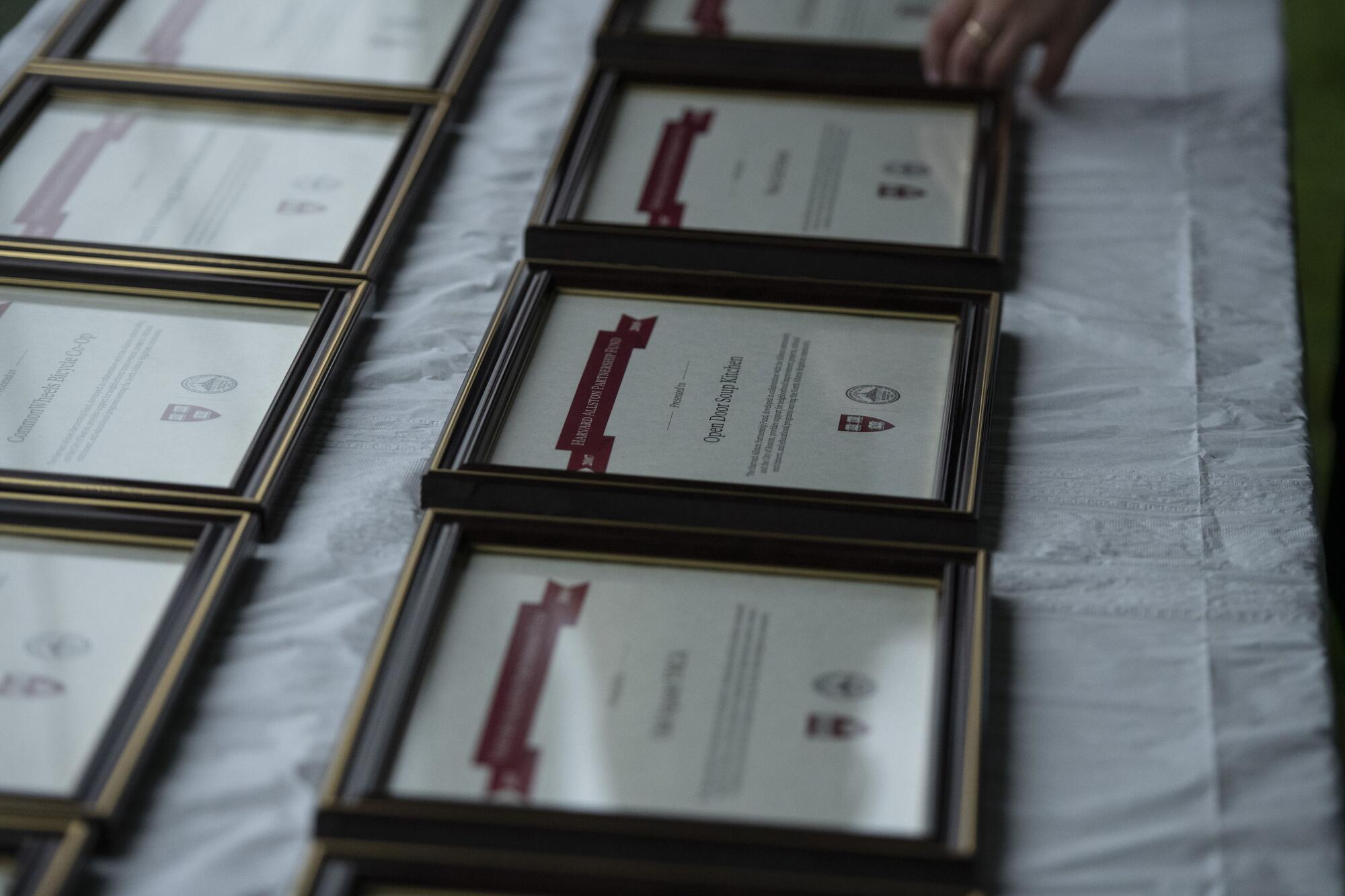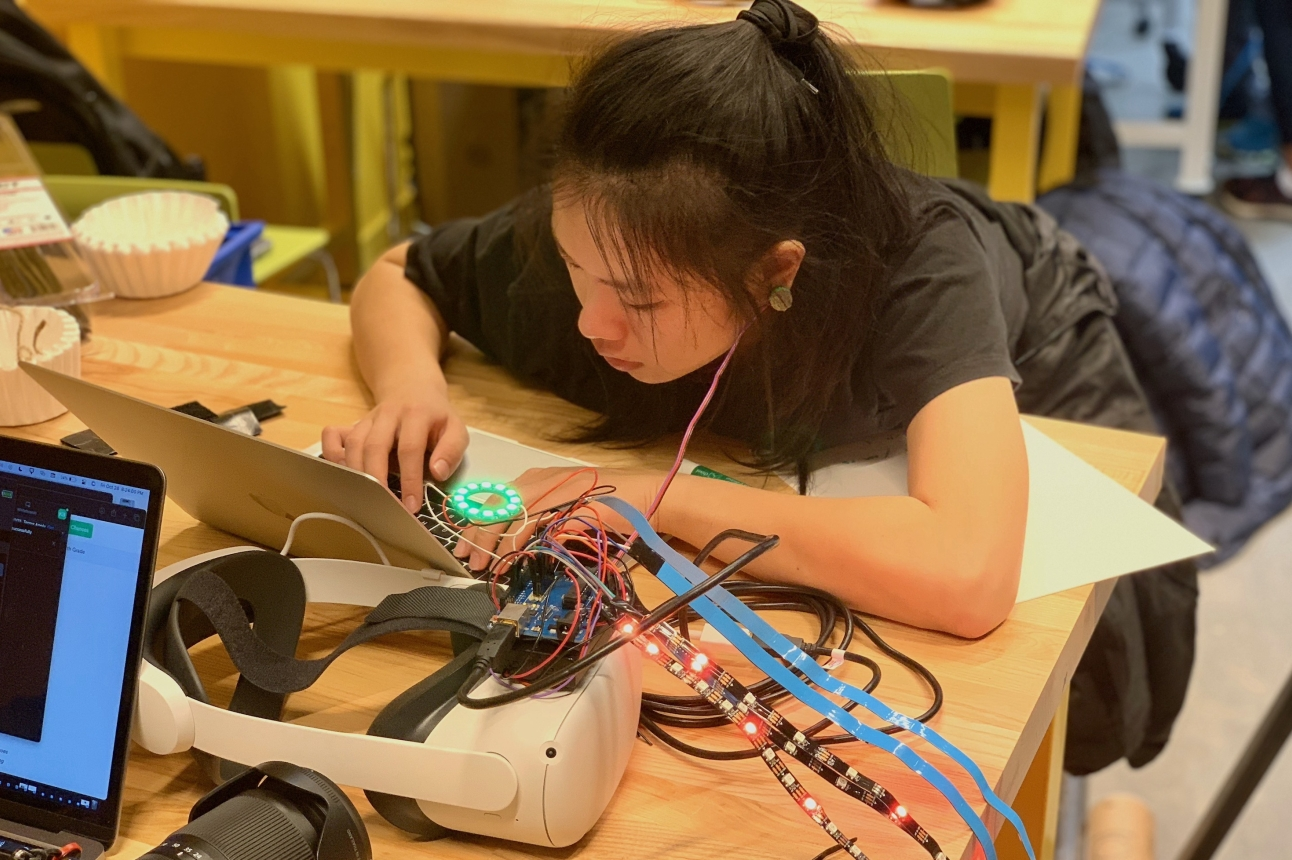
Harvard Active Learning Labs serve as a vital bridge for aspiring scientists and engineers, fostering hands-on experiences that ignite passion for research among high school students. Through innovative programs such as Bioengineering Science, Technology, and Research (BioSTAR), participants engage in cutting-edge topics like CRISPR gene editing and cancer therapies, while honing skills in experimental design. The lab’s commitment to environmental engineering shines through in the EnviroSTAR initiative, where students tackle real-world challenges related to water quality and sustainability. By immersing themselves in practical applications, like testing water filtration systems, students gain valuable insights into the complexities of modern science. Harvard Active Learning Labs exemplify a transformative approach to education, inspiring the next generation of innovators to pursue careers in bioengineering and environmental stewardship.
The Harvard Active Learning Labs offer a unique platform for high school students to explore the realms of scientific discovery and engineering. In these dynamic environments, participants are immersed in hands-on activities that range from advanced gene-editing techniques to developing solutions for pressing environmental issues. Programs like BioSTAR and EnviroSTAR not only equip students with essential skills and knowledge but also nurture their curiosity for scientific inquiry. By tackling real-world problems such as water purification and cancer research, students are prepared for future challenges in their educational and professional journeys. Overall, these labs function as incubators for young minds aiming to make an impactful contribution to fields like bioengineering, environmental science, and biotechnology.
Exploring CRISPR Gene Editing in Active Learning Labs
The integration of CRISPR gene editing technology into high school science programs is revolutionizing the way students engage with molecular biology. At the Harvard Active Learning Labs, students like Mikhal Shvartsman and Isobel Maksoudian delve into the world of genetic manipulation, experiencing firsthand the nuances of using CRISPR/Cas9 to deactivate gene expression in E. coli. This innovative approach not only enhances the learning experience but also equips teenagers with cutting-edge skills that are essential in contemporary bioengineering fields.
The hands-on experiments with CRISPR provide students invaluable insights into the potential applications in medical research and treatment development. Participants explore the ethical implications of gene editing, fostering critical thinking and discussions around genetic technologies. The program balances practical laboratory techniques with theoretical discussions, creating a well-rounded educational approach that supports student aspirations in the sciences.
Harvard Bioengineering Programs: Bridging Science and Community
Harvard’s commitment to community engagement is evident in its Bioengineering Science, Technology and Research (BioSTAR) programs. By inviting local high school students to participate in real-world scientific research, Harvard actively nurtures the next generation of scientists and engineers. The program, under the guidance of experienced faculty and graduate students, immerses participants in advanced concepts like drug delivery systems and cancer therapy, directly linking classroom knowledge with practical applications.
This outreach is crucial for expanding awareness and access to STEM fields, especially for underrepresented communities. Programs such as BioSTAR challenge students to think critically about scientific problems, encouraging collaboration and the sharing of ideas among diverse groups. This holistic educational philosophy, rooted in Harvard’s traditions, underlines the importance of cultivating a strong pipeline of future pioneers in bioengineering.
Innovations in Environmental Engineering at Harvard
Environmental engineering is rapidly evolving to address global challenges, and students at Harvard’s Active Learning Labs are at the forefront of this revolution. In the EnviroSTAR program, participants like Elena Wisniewski engage with real-world issues such as water quality, analyzing samples for contaminants including microbes and microplastics. This experience underscores the growing need for environmental solutions that are informed by scientific rigor and innovation.
The curriculum’s experiential learning component is complemented by field trips to local water treatment facilities, where students gain insight into the practical application of environmental engineering principles. By merging theoretical knowledge with hands-on practice, Harvard empowers students to understand the significance of engineering solutions in protecting vital resources like clean water.
Hands-on Water Filtration Projects: A Learning Experience
Throughout the EnviroSTAR program, students get the unique opportunity to design their own water filtration systems. By working in teams within the REEF Makerspace, participants navigate the complexities of design engineering, applying scientific principles to craft functional prototypes. This project-based learning approach allows students to experience the iterative nature of engineering as they test, analyze, and refine their designs based on real-time feedback.
The challenge of creating effective filtration systems not only reinforces the theoretical underpinnings of environmental engineering but also emphasizes teamwork and collaboration. Through these projects, students cultivate essential skills such as problem-solving, critical thinking, and creativity, which are vital for future careers in STEM fields. The program ultimately illustrates the profound impact that hands-on learning can have on student engagement and motivation.
The Importance of Collaborative Learning in Science
Collaboration is a cornerstone of effective scientific inquiry, as demonstrated in Harvard’s Active Learning Labs. Students from various backgrounds come together, bringing diverse perspectives that enrich the learning experience. Programs like BioSTAR and EnviroSTAR value peer-to-peer learning, where students discuss methodologies, troubleshoot problems, and celebrate successes together.
This collaborative environment nurtures a sense of community and belonging, encouraging students to support one another in their scientific endeavors. Shared experiences create bonds that not only enhance understanding of complex scientific concepts but also motivate students to pursue further studies and careers in fields like bioengineering and environmental science.
Real-World Applications of Biomedical Engineering
Through programs like BioSTAR, students experience firsthand how biomedical engineering can lead to innovations in healthcare. The curriculum includes practical lab work where students learn to create drug nanoparticles designed for targeted delivery systems. This cutting-edge technology exemplifies how engineering principles can be applied to solve critical health challenges, empowering students to envision their future roles in transforming healthcare.
The integration of real-world applications into the learning process highlights the significance of interdisciplinary approaches in STEM education. Whether through discussions with faculty at the Wyss Institute or hands-on lab work, students grasp the urgency and relevance of their studies, motivating them to engage with complex topics like cancer therapy and precision medicine.
Addressing Global Environmental Challenges Through Education
As environmental issues become increasingly urgent, educational initiatives like Harvard’s EnviroSTAR program are critical in fostering a new generation of environmental engineers. With participants from around the globe, the program addresses pressing challenges such as pollution and access to clean water. This international collaboration enriches students’ understanding of diverse environmental concerns and the innovative solutions required to tackle them.
The curriculum emphasizes the importance of scientific literacy and problem-solving in addressing environmental challenges. By empowering students to assess water quality and design filtration systems, the program provides valuable lessons in sustainability and conservation. This focus aligns with global efforts to promote responsible environmental stewardship and highlights the essential role of engineers in creating a more sustainable future.
The Role of Fieldwork in Environmental Education
Fieldwork is an integral component of the engineering curriculum at Harvard, particularly within the EnviroSTAR program. Students gain hands-on experience collecting and analyzing samples from their local environments, reinforcing the importance of real-world applications in scientific education. Through field trips to the Charles River and water treatment facilities, participants learn how theoretical knowledge translates into practical skills.
This experiential learning not only bolsters students’ technical capabilities but also deepens their appreciation for environmental sciences. Observing firsthand the challenges faced in maintaining clean water supplies fosters a profound understanding of the impact engineers can have on society, inspiring students to pursue careers dedicated to environmental sustainability.
Empowering Students Through STEM Outreach
STEM outreach programs like those at Harvard’s Active Learning Labs play an essential role in shaping the educational landscape. By providing high school students with access to university-level resources and mentoring, these initiatives empower participants to explore their interests in science and engineering. Programs such as BioSTAR and EnviroSTAR focus on practical experiences that inspire students to pursue STEM fields, helping bridge the gap between education and career opportunities.
The outreach programs also aim to elevate underrepresented groups in science, creating pathways for diverse young minds to contribute to the future of engineering and technology. Such initiatives ensure that all students, regardless of their background, have the opportunity to engage in meaningful scientific inquiry, which is critical for advancing innovation and addressing global challenges.
Frequently Asked Questions
What are the Harvard Active Learning Labs, and how do they connect to Harvard Bioengineering?
The Harvard Active Learning Labs are immersive programs designed for high school students to engage in hands-on scientific research and engineering tasks, particularly in areas like Harvard Bioengineering. Programs such as BioSTAR and EnviroSTAR provide students with opportunities to explore complex topics such as gene editing with CRISPR, water quality, and environmental engineering, thereby bridging the gap between high school education and advanced scientific practices.
What types of student science programs are offered at Harvard Active Learning Labs?
The Harvard Active Learning Labs offer various student science programs, including Bioengineering Science, Technology and Research (BioSTAR), which focuses on cancer therapies and CRISPR gene editing, and Environmental Science, Technology and Research (EnviroSTAR), which emphasizes clean water access and environmental engineering. These programs combine theoretical learning with practical lab experiences to inspire the next generation of scientists and engineers.
How does the CRISPR gene editing experience at Harvard Active Learning Labs benefit students?
Participating in CRISPR gene editing projects at the Harvard Active Learning Labs benefits students by providing hands-on experience with cutting-edge technologies. Students learn to deactivate gene expression in E. coli, gaining foundational skills in biotechnology and exposure to real-world applications of gene editing, which is crucial for those interested in pursuing careers in bioengineering and molecular biology.
What is the significance of water filtration systems in the context of Harvard Active Learning Labs?
The significance of water filtration systems in the Harvard Active Learning Labs programs, particularly EnviroSTAR, lies in addressing global environmental challenges. Through hands-on projects, students engage in designing, building, and testing water filtration prototypes, which enhances their understanding of environmental engineering principles and the importance of clean water access in communities around the world.
How do Harvard Active Learning Labs support the field of environmental engineering?
Harvard Active Learning Labs support the field of environmental engineering by providing students with practical experiences that tackle pressing environmental issues. Programs like EnviroSTAR allow students to measure water quality, conduct fieldwork, and develop innovative solutions for water treatment, thus preparing them for future challenges in environmental science and engineering.
What impact do experiential learning opportunities at Harvard Active Learning Labs have on high school students?
Experiential learning opportunities at Harvard Active Learning Labs significantly impact high school students by offering them hands-on research experiences and exposure to advanced scientific methodologies. Programs are designed to enhance students’ skills, foster collaboration, and ignite interest in science and engineering disciplines, ultimately shaping their academic and career aspirations in fields like bioengineering and environmental science.
| Key Participants | Programs | Key Learning Outcomes | Locations and Activities |
|---|---|---|---|
| Mikhal Shvartsman (Lincoln-Sudbury High School), Emily Kuang (Lexington High School), Aditi Rajvanshi (Lexington High School) | Bioengineering Science, Technology and Research (BioSTAR) | Hands-on experience in cell culture, nanoparticle synthesis, and CRISPR-Cas9 gene editing. | Lab bench experiments and discussions with researchers at Harvard University. |
| Isobel Maksoudian (Arlington High School), Amrit Chadha (Arlington High School) | Environmental Science, Technology and Research (EnviroSTAR) | Applied knowledge in environmental engineering and collaboration on design projects. | Field trips to Charles River and Fresh Pond Water Treatment Facility. |
| Kelvin Ndolo (Clay International Secondary School, Kenya), Nishka Avunoori (Chester Brook, Pennsylvania) | Practical activities measuring water quality, building water filtration systems. |
Summary
Harvard Active Learning Labs provide an exceptional opportunity for high school students to engage with science and engineering through hands-on experiences. By participating in programs like BioSTAR and EnviroSTAR, students not only learn advanced techniques in bioengineering and environmental science but also apply their knowledge in practical settings, bridging the gap between classroom concepts and real-world applications. This immersive educational approach fosters a deeper understanding of critical global challenges and inspires the next generation of innovators in the scientific community.







